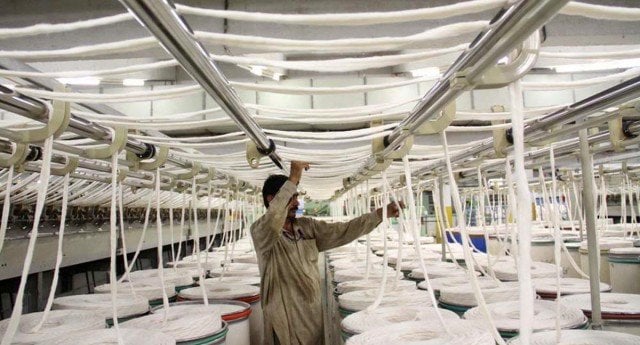One of the main reasons the nation repeatedly requests bailouts from the International Monetary Fund (IMF) is the small size and slow growth of its exports.
Not only is Pakistan’s export profile small, but it is also undiversified. The textile sector is primarily responsible for about half of Pakistan’s total exports of products and services in the most recent fiscal year, as per data obtained from the State Bank of Pakistan (SBP).
The textile industry had a sharp increase in growth in the later phases of the pandemic, gaining market share when rivals in Bangladesh and India were compelled to close to stop the virus’s spread. Exports of textiles increased by 12.6% in FY21 and 28% in FY22, largely due to government incentives and subsidies.
Sadly, this increasing trend came to a stop. The textile industry saw a decline in the face of political and economic difficulties; exports fell by 9.8% in FY23 and another 6.3% in the first four months of FY24.
Export Advisory Council (EAC)
However, the Export Advisory Council (EAC) of the Ministry of Commerce, which is made up of influential textile industry people, has proposed a very aggressive export goal. They suggest that Pakistan’s textile exports may reach $50 billion in five years with the correct combination of trade barriers being lifted and incentives implemented.
This goal surpasses even Pakistan’s overall goods and services exports of $35.5 billion, and it eclipses the $16.6 billion in textile exports achieved the previous year.
The EAC appears to be trying to boost textile exports by an astounding 200% over the previous year’s numbers, which might signal the beginning of a prosperous age for Pakistan’s economy.
Before designing any incentives, lawmakers must, however, take a more comprehensive approach and take into account both the textile industry’s past success and the state of the world economy.
It’s crucial to remember that, despite the textile industry’s recent remarkable expansion, the pandemic’s disruption of global supply networks had a major impact on this progress. An extended viewpoint paints an unsatisfactory image of the sector’s performance.
Textile Industry Unveils $50b Export Plan
The textile sector also operated during what is often referred to as the ‘free money era’, a time that started in the aftermath of the global financial crisis of 2008, in which the global central banks slashed interest rates and pursued expansionary monetary policies. This period was marked by lower borrowing costs and more demand, both of which facilitated the expansion of businesses.
At the same time, the world economy—which includes the US, China, and the UK, three of Pakistan’s main trading partners—grew rapidly. After the global financial crisis of 2008–2009, there was an economic recovery that lasted until 2020, when the Covid–induced recession finally broke out.
Despite these fortunate international circumstances, Pakistan’s textile industry grew noticeably slowly throughout this period.
Policymakers must meticulously evaluate the potential of different sectors before allocating incentives, especially considering the country’s challenging economic situation, the textile industry’s track record, and the global business environment.







